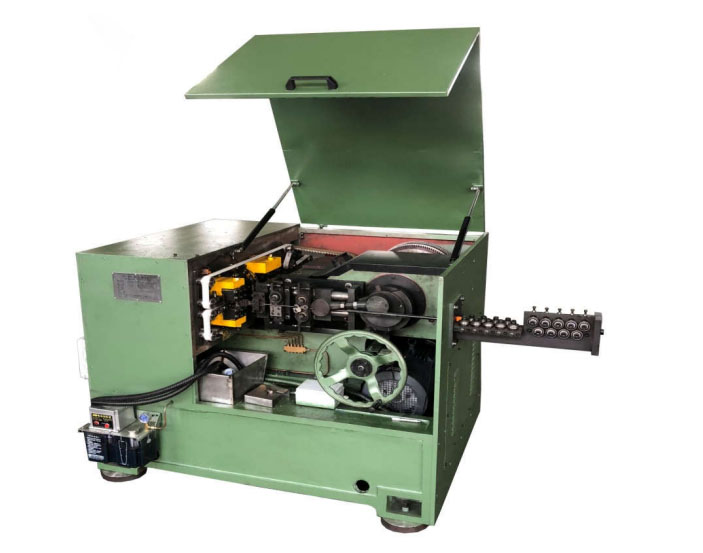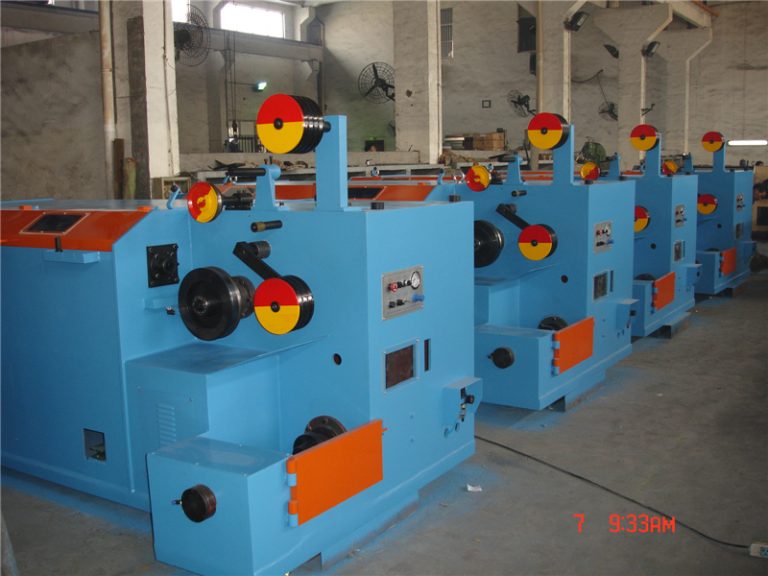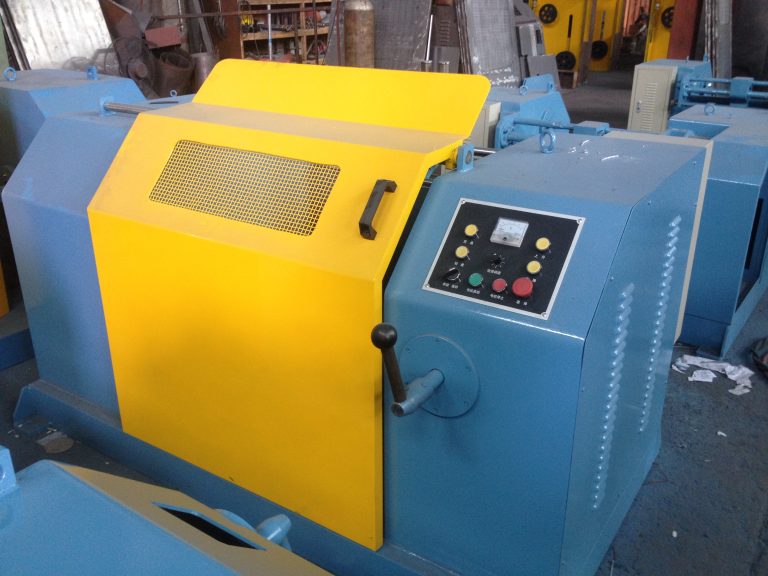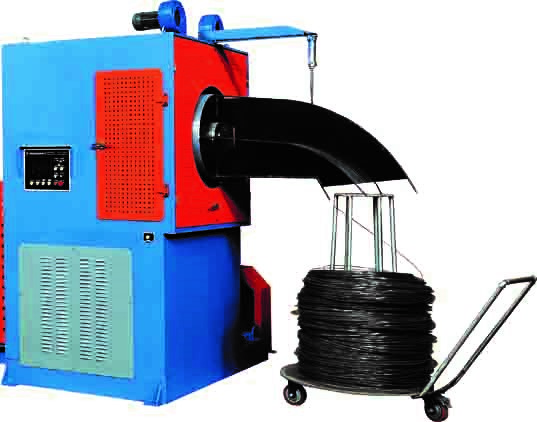Table of Contents
വയർ ഡ്രോയിംഗ് മെഷീനുകളിൽ ലംബമായ പേ-ഓഫ് സംവിധാനങ്ങൾ ഉപയോഗിക്കുന്നതിൻ്റെ പ്രയോജനങ്ങൾ
എങ്ങനെ ലംബമായ പേ-ഓഫ് സംവിധാനങ്ങൾ വയർ ഡ്രോയിംഗ് പ്രവർത്തനങ്ങളിൽ കാര്യക്ഷമതയും ഉൽപ്പാദനക്ഷമതയും മെച്ചപ്പെടുത്തുന്നു

വയർ ഡ്രോയിംഗ് എന്നത് വിവിധ വ്യവസായങ്ങളിൽ വയറിൻ്റെ വ്യാസം കുറയ്ക്കാൻ ഉപയോഗിക്കുന്ന ഒരു പ്രക്രിയയാണ്. നിർമ്മാണം മുതൽ ഇലക്ട്രോണിക്സ് വരെയുള്ള വിവിധ ആപ്ലിക്കേഷനുകളിൽ ഉപയോഗിക്കുന്ന വ്യത്യസ്ത വലുപ്പത്തിലും ആകൃതിയിലും ഉള്ള വയർ നിർമ്മിക്കുന്നതിന് ഈ പ്രക്രിയ അത്യന്താപേക്ഷിതമാണ്. വയർ ഡ്രോയിംഗ് പ്രക്രിയയുടെ ഒരു നിർണായക ഘടകം ഓവർഹെഡ് പേഓഫ് സിസ്റ്റമാണ്, അത് വയർ ഡ്രോയിംഗ് മെഷീനിലേക്ക് നൽകുന്നു.
പരമ്പരാഗതമായി, പേ-ഓഫ് സംവിധാനങ്ങൾ ഒരു തിരശ്ചീന ഓറിയൻ്റേഷൻ ഉപയോഗിച്ചാണ് രൂപകൽപ്പന ചെയ്തിരിക്കുന്നത്, അവിടെ വയർ സ്പൂളുകൾ ഒരു തിരശ്ചീന അക്ഷത്തിൽ സ്ഥാപിച്ചിരിക്കുന്നു. എന്നിരുന്നാലും, സമീപ വർഷങ്ങളിൽ, ലംബമായ പേ-ഓഫ് സിസ്റ്റങ്ങളിലേക്ക് ഒരു മാറ്റം ഉണ്ടായിട്ടുണ്ട്, അത് അവയുടെ തിരശ്ചീന എതിരാളികളേക്കാൾ നിരവധി ഗുണങ്ങൾ നൽകുന്നു.
ലംബമായ പേ-ഓഫ് സിസ്റ്റങ്ങളുടെ പ്രാഥമിക നേട്ടങ്ങളിലൊന്ന് അവയുടെ സ്ഥലം ലാഭിക്കുന്ന രൂപകൽപ്പനയാണ്. വയർ സ്പൂളുകളെ ലംബമായി ഓറിയൻ്റുചെയ്യുന്നതിലൂടെ, തിരശ്ചീന പേ-ഓഫ് സിസ്റ്റങ്ങളുമായി താരതമ്യപ്പെടുത്തുമ്പോൾ ഈ സംവിധാനങ്ങൾ കുറച്ച് ഫ്ലോർ സ്പേസ് എടുക്കുന്നു. സ്ഥലപരിമിതിയുള്ള സൗകര്യങ്ങളിൽ ഇത് പ്രത്യേകിച്ചും പ്രയോജനകരമാണ്, ലഭ്യമായ പ്രദേശത്തിൻ്റെ കൂടുതൽ കാര്യക്ഷമമായ ഉപയോഗത്തിന് ഇത് അനുവദിക്കുന്നു.
സ്ഥലം ലാഭിക്കുന്നതിന് പുറമേ, ലംബമായ പേ-ഓഫ് സംവിധാനങ്ങളും മെച്ചപ്പെട്ട പ്രവേശനക്ഷമത വാഗ്ദാനം ചെയ്യുന്നു. വയർ സ്പൂളുകൾ ലംബമായി സ്ഥാപിച്ചിരിക്കുന്നതിനാൽ, ഒരു തിരശ്ചീന അക്ഷത്തിന് ചുറ്റും നാവിഗേറ്റ് ചെയ്യാതെ തന്നെ ഓപ്പറേറ്റർമാർക്ക് സ്പൂളുകൾ എളുപ്പത്തിൽ ആക്സസ് ചെയ്യാനും മാറ്റാനും കഴിയും. ഇത് സമയം ലാഭിക്കുക മാത്രമല്ല, അപകടസാധ്യത കുറയ്ക്കുകയും ചെയ്യുന്നു. സങ്കീർണ്ണമായ വയർ ഗൈഡിംഗ് മെക്കാനിസങ്ങളുടെ ആവശ്യകത ഇല്ലാതാക്കുന്നതിലൂടെ, ഈ സംവിധാനങ്ങൾ വയർ ഫീഡിംഗ് പ്രക്രിയ ലളിതമാക്കുന്നു, ജാമുകളുടെയും ഉൽപാദനത്തെ തടസ്സപ്പെടുത്തുന്ന മറ്റ് പ്രശ്നങ്ങളുടെയും സാധ്യത കുറയ്ക്കുന്നു. ഇത് സുഗമമായ പ്രവർത്തനത്തിനും ഉയർന്ന ഉൽപ്പാദനക്ഷമതയ്ക്കും കാരണമാകുന്നു, ഇത് ആത്യന്തികമായി നിർമ്മാതാവിന് ചെലവ് ലാഭിക്കാൻ ഇടയാക്കുന്നു.
Wire drawing is a process used in various industries to reduce the diameter of wire by pulling it through a series of dies. This process is essential for producing wire of different sizes and shapes, which are used in a wide range of applications, from construction to electronics. One critical component of the wire drawing process is the Overhead Payoff system, which feeds the wire into the drawing machine.
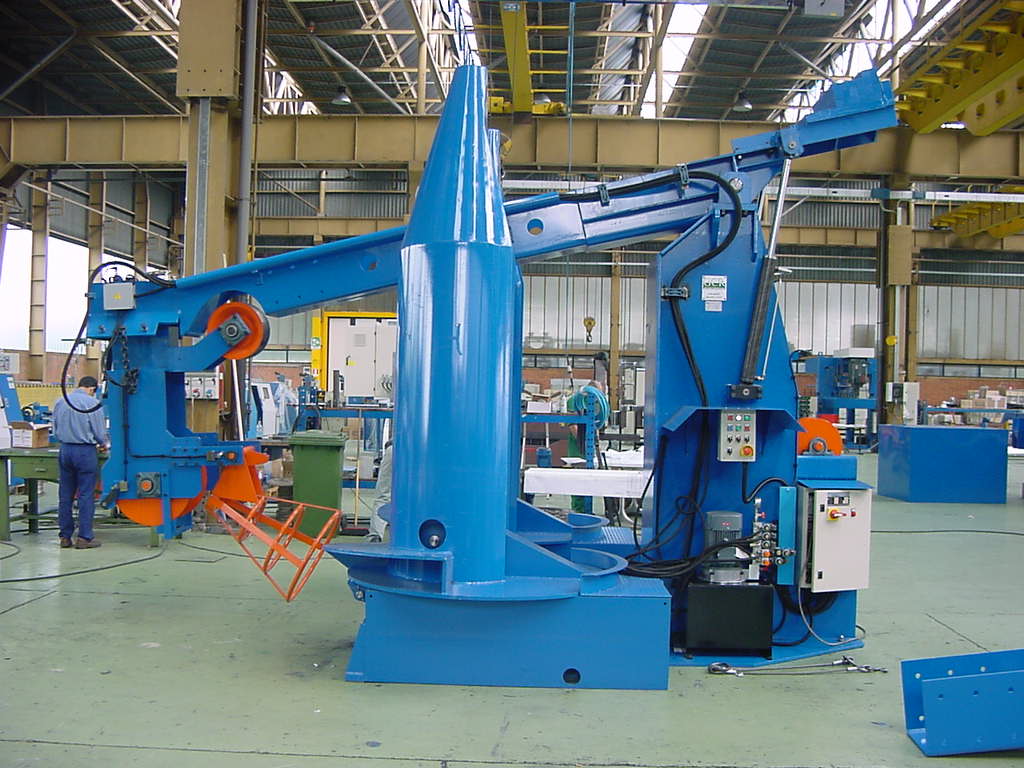
Traditionally, pay-off systems have been designed with a horizontal orientation, where the wire spools are placed on a horizontal axis. However, in recent years, there has been a shift towards vertical pay-off systems, which offer several advantages over their horizontal counterparts.
One of the primary benefits of vertical pay-off systems is their space-saving design. By orienting the wire spools vertically, these systems take up less floor space compared to horizontal pay-off systems. This is particularly advantageous in facilities where space is limited, allowing for more efficient use of the available area.
In addition to space savings, vertical pay-off systems also offer improved accessibility. With the wire spools positioned vertically, operators can easily access and change out spools without having to navigate around a horizontal axis. This not only saves time but also reduces the risk of injury by minimizing the need for awkward bending and reaching.
Furthermore, vertical pay-off systems can enhance the overall efficiency of wire drawing operations. By eliminating the need for complex wire guiding mechanisms, these systems simplify the wire feeding process, reducing the likelihood of jams and other issues that can disrupt production. This results in smoother operation and higher productivity, ultimately leading to cost savings for the manufacturer.
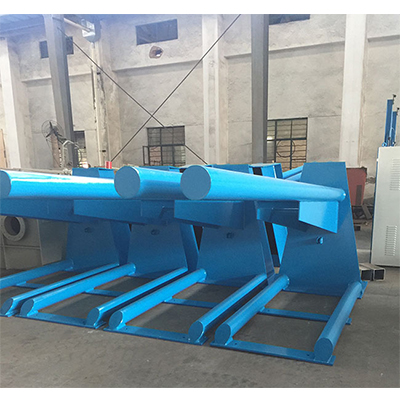
Another advantage of vertical pay-off systems is their ability to accommodate larger wire spools. With the spools positioned vertically, there is no limit to the size of spool that can be used, allowing for longer production runs and fewer interruptions for spool changes. This is particularly beneficial for high-volume wire drawing operations, where maximizing uptime is crucial for meeting production targets.
Additionally, vertical pay-off systems offer greater flexibility in terms of wire handling. With the ability to easily adjust the height of the wire spools, operators can customize the feeding angle to suit the specific requirements of the wire drawing process. This level of customization can help optimize the drawing process, resulting in higher quality wire products.
Overall, vertical pay-off systems represent a significant advancement in wire drawing technology, offering a range of benefits that can improve efficiency and productivity in wire drawing operations. From space savings and improved accessibility to enhanced efficiency and flexibility, these systems provide a compelling solution for manufacturers looking to optimize their wire drawing processes. As the industry continues to evolve, vertical pay-off systems are likely to become the standard choice for wire drawing operations seeking to maximize their output and minimize downtime.



